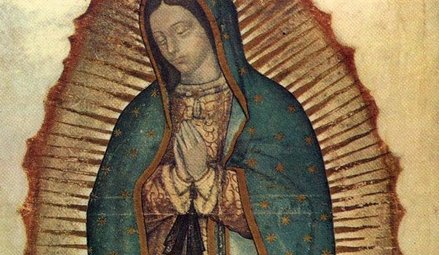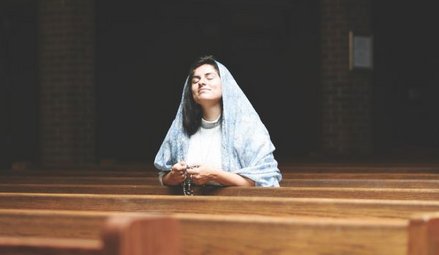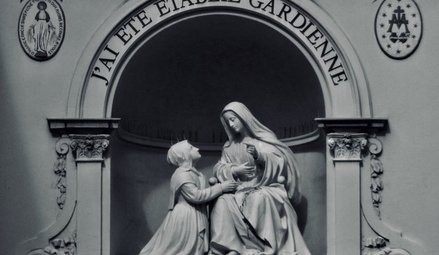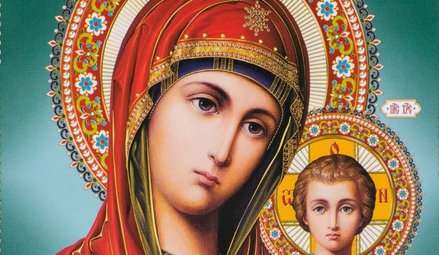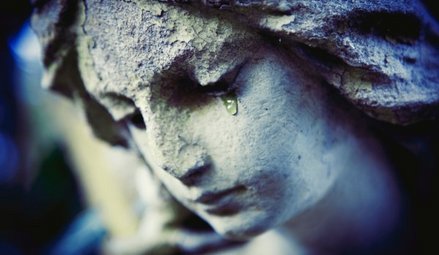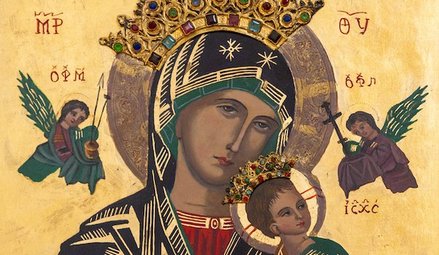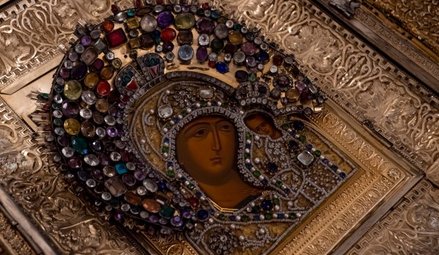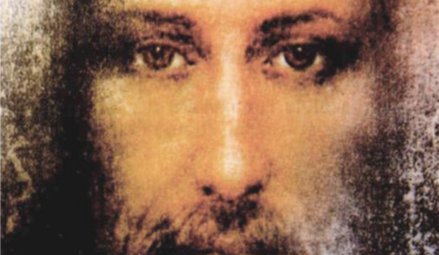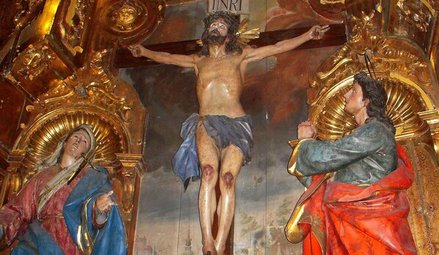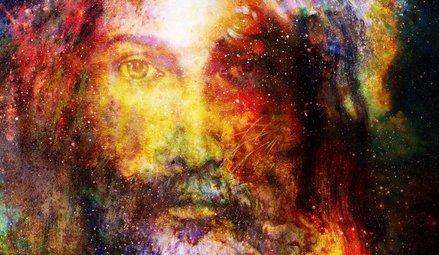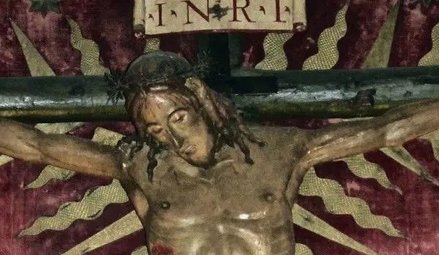- By theme
- Jesus
- The many proofs of Christ’s resurrection
- Saint Thomas Aquinas: God gave all the divine proofs we needed to believe
- The surpassing power of Christ's word
- Lewis’s trilemma: a proof of Jesus’s divinity
- God saves: the power of the holy name of Jesus
- Jesus spoke and acted as God's equal
- Jesus' divinity is actually implied in the Koran
- Jesus came at the perfect time of history
- Rabbinical sources testify to Jesus' miracles
- Mary
- The Church
- The Bible
- An enduring prophecy and a series of miraculous events preventing the reconstruction of the Temple
- The authors of the Gospels were either eyewitnesses or close contacts of those eyewitnesses
- Onomastics support the historical reliability of the Gospels
- The New Testament was not altered
- The New Testament is the best-attested manuscript of Antiquity
- The Gospels were written too early after the facts to be legends
- Archaeological finds confirm the reliability of the New Testament
- The criterion of embarrassment proves that the Gospels tell the truth
- The dissimilarity criterion strengthens the case for the historical reliability of the Gospels
- 84 details in Acts verified by historical and archaeological sources
- The unique prophecies that announced the Messiah
- The time of the coming of the Messiah was accurately prophesied
- The prophet Isaiah's ultra accurate description of the Messiah's sufferings
- Daniel's "Son of Man" is a portrait of Christ
- The Apostles
- Saint Peter, prince of the apostles
- Saint John the Apostle: an Evangelist and Theologian who deserves to be better known (d. 100)
- Saint Matthew, apostle, evangelist and martyr (d. 61)
- James the Just, “brother” of the Lord, apostle and martyr (d. 62 AD)
- Saint Matthias replaces Judas as an apostle (d. 63)
- The martyrs
- The protomartyr Saint Stephen (d. 31)
- Polycarp, bishop of Smyrna, disciple of John and martyr (d. 155)
- Justin Martyr: philosopher and apologist (d.165)
- Saint Blandina and the Martyrs of Lyon: the fortitude of faith (177 AD)
- Saint Agatha stops a volcano from destroying the city of Catania (d. 251)
- Saint Lucy of Syracuse, virgin and martyr for Christ (d. 304)
- Saint Boniface propagates Christianity in Germany (d. 754)
- Thomas More: “The king’s good servant, but God’s first”
- The martyrdom of Paul Miki and his companions (d. 1597)
- The martyrs of Angers and Avrillé (1794)
- The Martyrs of Compiègne (1794)
- The Vietnamese martyrs Father Andrew Dung-Lac and his 116 companions (17th-19th centuries)
- He braved torture to atone for his apostasy (d. 1818)
- Blaise Marmoiton: the epic journey of a missionary to New Caledonia (d. 1847)
- The Uganda martyrs: a recurring pattern in the persecution of Christians (1885)
- José Luis Sanchez del Rio, martyred at age 14 for Christ the King (d. 1928)
- Saint Maximilian Kolbe, Knight of the Immaculate (d. 1941)
- The monks
- The Desert Fathers (3rd century)
- Saint Anthony of the Desert, a father of monasticism (d. 356)
- Saint Benedict, father of Western monasticism (d. 550)
- Saint Bruno the Carthusian (d.1101): the miracle of a hidden life
- Blessed Angelo Agostini Mazzinghi: the Carmelite with flowers pouring from his mouth (d. 1438)
- Monk Abel of Valaam's accurate prophecies about Russia (d. 1841)
- The more than 33,000 miracles of Saint Charbel Maklouf (d. 1898)
- Saint Pio of Pietrelcina (d. 1968): How God worked wonders through "a poor brother who prays"
- The surprising death of Father Emmanuel de Floris (d. 1992)
- The prophecies of Saint Paisios of Mount Athos (d. 1994)
- The saints
- Saints Anne and Joachim, parents of the Virgin Mary (19 BC)
- Saint Nazarius, apostle and martyr (d. 68 or 70)
- Ignatius of Antioch: successor of the apostles and witness to the Gospel (d. 117)
- Saint Gregory the Miracle-Worker (d. 270)
- Saint Martin of Tours: patron saint of France, father of monasticism in Gaul, and the first great leader of Western monasticism (d. 397)
- Saint Augustine of Canterbury evangelises England (d. 604)
- Saint Lupus, the bishop who saved his city from the Huns (d. 623)
- Saint Rainerius of Pisa: from musician to merchant to saint (d. 1160)
- Saint Dominic of Guzman (d.1221): an athlete of the faith
- Saint Francis, the poor man of Assisi (d. 1226)
- Saint Anthony of Padua: "everyone’s saint"
- Saint Rose of Viterbo or How prayer can transform the world (d. 1252)
- Saint Simon Stock receives the scapular of Mount Carmel from the hands of the Virgin Mary
- The unusual boat of Saint Basil of Ryazan
- Saint Agnes of Montepulciano's complete God-confidence (d. 1317)
- The extraordinary conversion of Michelina of Pesaro
- Saint Peter Thomas (d. 1366): a steadfast trust in the Virgin Mary
- Saint Rita of Cascia: hoping against all hope
- Saint Catherine of Genoa and the Fire of God's love (d. 1510)
- Saint Anthony Mary Zaccaria, physician of bodies and souls (d. 1539)
- Saint Ignatius of Loyola (d. 1556): "For the greater glory of God"
- Brother Alphonsus Rodríguez, SJ: the "holy porter" (d. 1617)
- Martin de Porres returns to speed up his beatification (d. 1639)
- Virginia Centurione Bracelli: When God is the only goal, all difficulties are overcome (d.1651)
- Saint Marie of the Incarnation, "the Teresa of New France" (d.1672)
- St. Francis di Girolamo's gift of reading hearts and souls (d. 1716)
- Rosa Venerini: moving in the ocean of the Will of God (d. 1728)
- Saint Jeanne-Antide Thouret: heroic perseverance and courage (d. 1826)
- Seraphim of Sarov (1759-1833): the purpose of the Christian life is to acquire the Holy Spirit
- Camille de Soyécourt, filled with divine fortitude (d. 1849)
- Bernadette Soubirous, the shepherdess who saw the Virgin Mary (1858)
- Saint John Vianney (d. 1859): the global fame of a humble village priest
- Gabriel of Our Lady of Sorrows, the "Gardener of the Blessed Virgin" (d. 1862)
- Father Gerin, the holy priest of Grenoble (1863)
- Blessed Francisco Palau y Quer: a lover of the Church (d. 1872)
- Saints Louis and Zelie Martin, the parents of Saint Therese of Lisieux (d. 1894 and 1877)
- The supernatural maturity of Francisco Marto, “contemplative consoler of God” (d. 1919)
- Saint Faustina, apostle of the Divine Mercy (d. 1938)
- Brother Marcel Van (d.19659): a "star has risen in the East"
- Doctors
- The mystics
- Lutgardis of Tongeren and the devotion to the Sacred Heart
- Saint Angela of Foligno (d. 1309) and "Lady Poverty"
- Saint John of the Cross: mystic, reformer, poet, and universal psychologist (+1591)
- Blessed Anne of Jesus: a Carmelite nun with mystical gifts (d.1621)
- Catherine Daniélou: a mystical bride of Christ in Brittany
- Saint Margaret Mary sees the "Heart that so loved mankind"
- Jesus makes Maria Droste zu Vischering the messenger of his Divine Heart (d. 1899)
- Mother Yvonne-Aimée of Jesus' predictions concerning the Second World War (1922)
- Sister Josefa Menendez, apostle of divine mercy (d. 1923)
- Edith Royer (d. 1924) and the Sacred Heart Basilica of Montmartre
- Rozalia Celak, a mystic with a very special mission (d. 1944)
- Visionaries
- Saint Perpetua delivers her brother from Purgatory (203)
- María de Jesús de Ágreda, abbess and friend of the King of Spain
- Discovery of the Virgin Mary's house in Ephesus (1891)
- Sister Benigna Consolata: the "Little Secretary of Merciful Love" (d. 1916)
- Maria Valtorta's visions match data from the Israel Meteorological Service (1943)
- Berthe Petit's prophecies about the two world wars (d. 1943)
- Maria Valtorta saw only one pyramid at Giza in her visions... and she was right! (1944)
- The location of Saint Peter's village seen in a vision before its archaeological discovery (1945)
- The 700 extraordinary visions of the Gospel received by Maria Valtorta (d. 1961)
- The amazing geological accuracy of Maria Valtorta's writings (d. 1961)
- Maria Valtorta's astronomic observations consistent with her dating system
- Discovery of an ancient princely house in Jerusalem, previously revealed to a mystic (d. 1961)
- Mariette Kerbage, the seer of Aleppo (1982)
- The 20,000 icons of Mariette Kerbage (2002)
- The popes
- The great witnesses of the faith
- Saint Augustine's conversion: "Why not this very hour make an end to my uncleanness?" (386)
- Thomas Cajetan (d. 1534): a life in service of the truth
- Madame Acarie, "the servant of the servants of God" (d. 1618)
- Blaise Pascal (d.1662): Biblical prophecies are evidence
- Madame Élisabeth and the sweet smell of virtue (d. 1794)
- Jacinta, 10, offers her suffering to save souls from hell (d. 1920)
- Father Jean-Édouard Lamy: "another Curé of Ars" (d. 1931)
- Christian civilisation
- The depth of Christian spirituality
- John of the Cross' Path to perfect union with God based on his own experience
- The dogma of the Trinity: an increasingly better understood truth
- The incoherent arguments against Christianity
- The "New Pentecost": modern day, spectacular outpouring of the Holy Spirit
- The Christian faith explains the diversity of religions
- Cardinal Pierre de Bérulle (d.1629) on the mystery of the Incarnation
- Christ's interventions in history
- Marian apparitions and interventions
- The Life-giving Font of Constantinople
- Apparition of Our Lady of La Treille in northern France: prophecy and healings (600)
- Our Lady of Virtues saves the city of Rennes in Bretagne (1357)
- Mary stops the plague epidemic at Mount Berico (1426)
- Our Lady of Miracles heals a paralytic in Saronno (1460)
- Cotignac: the first apparitions of the Modern Era (1519)
- Savona: supernatural origin of the devotion to Our Lady of Mercy (1536)
- The Virgin Mary delivers besieged Christians in Cusco, Peru
- The victory of Lepanto and the feast of Our Lady of the Rosary (1571)
- The apparitions to Brother Fiacre (1637)
- The “aldermen's vow”, or the Marian devotion of the people of Lyon (1643)
- Our Lady of Nazareth in Plancoët, Brittany (1644)
- Our Lady of Laghet (1652)
- Saint Joseph’s apparitions in Cotignac, France (1660)
- Heaven confides in a shepherdess of Le Laus (1664-1718)
- Zeitoun, a two-year miracle (1968-1970)
- The Holy Name of Mary and the major victory of Vienna (1683)
- Heaven and earth meet in Colombia: the Las Lajas shrine (1754)
- The five Marian apparitions that traced an "M" over France, and its new pilgrimage route
- A series of Marian apparitions and prophetic messages in Ukraine since the 19th century (1806)
- "Consecrate your parish to the Immaculate Heart of Mary" (1836)
- At La Salette, Mary wept in front of the shepherds (1846)
- Our Lady of Champion, Wisconsin: the first and only approved apparition of Mary in the US (1859)
- Gietrzwald apparitions: heavenly help to a persecuted minority
- The silent apparition of Knock Mhuire in Ireland (1879)
- Mary "Abandoned Mother" appears in a working-class district of Lyon, France (1882)
- The thirty-three apparitions of the Virgin Mary in Beauraing (1932)
- "Our Lady of the Poor" appears eight times in Banneux (1933)
- Fontanelle-Montichiari apparitions of Our Lady "Rosa Mystica" (1947)
- Mary responds to the Vows of the Polish Nation (1956)
- Zeitoun apparitions
- The Virgin Mary comes to France's rescue by appearing at L'Ile Bouchard (1947)
- Maria Esperanza Bianchini and Mary, Mary, Reconciler of Peoples and Nations (1976)
- Luz Amparo and the El Escorial apparitions
- The extraordinary apparitions of Medjugorje and their worldwide impact
- The Virgin Mary prophesied the 1994 Rwandan genocide (1981)
- Our Lady of Soufanieh's apparition and messages to Myrna Nazzour (1982)
- The Virgin Mary heals a teenager, then appears to him dozens of times (1986)
- Seuca, Romania: apparitions and pleas of the Virgin Mary, "Queen of Light" (1995)
- Angels and their manifestations
- Mont Saint-Michel: Heaven watching over France
- The revelation of the hymn Axion Estin by the Archangel Gabriel (982)
- Angels give a supernatural belt to the chaste Thomas Aquinas (1243)
- The constant presence of demons and angels in the life of St Frances of Rome (d. 1440)
- Mother Yvonne-Aimée escapes from prison with the help of an angel (1943)
- Saved by Angels: The Miracle on Highway 6 (2008)
- Exorcisms in the name of Christ
- A wave of charity unique in the world
- Saint Peter Nolasco: a life dedicated to ransoming enslaved Christians (d. 1245)
- Rita of Cascia forgives her husband's murderer (1404)
- Saint Angela Merici: Christ came to serve, not to be served (d. 1540)
- Saint John of God: a life dedicated to the care of the poor, sick and those with mental disorders (d. 1550)
- Saint Camillus de Lellis, reformer of hospital care (c. 1560)
- Blessed Alix Le Clerc, encouraged by the Virgin Mary to found schools (d. 1622)
- Saint Vincent de Paul (d. 1660), apostle of charity
- Marguerite Bourgeoys, Montreal's first teacher (d. 1700)
- Frédéric Ozanam, inventor of the Church's social doctrine (d. 1853)
- Damian of Molokai: a leper for Christ (d. 1889)
- Pier Giorgio Frassati (d.1925): heroic charity
- Saint Dulce of the Poor, the Good Angel of Bahia (d. 1992)
- Mother Teresa of Calcutta (d. 1997): an unshakeable faith
- Heidi Baker: Bringing God's love to the poor and forgotten of the world
- Amazing miracles
- The miracle of liquefaction of the blood of St. Januarius (d. 431)
- The miracles of Saint Anthony of Padua (d. 1231)
- Saint Pius V and the miracle of the Crucifix (1565)
- Saint Philip Neri calls a teenager back to life (1583)
- The resurrection of Jérôme Genin (1623)
- Saint Francis de Sales brings back to life a victim of drowning (1623)
- Saint John Bosco and the promise kept beyond the grave (1839)
- The day the sun danced at Fatima (1917)
- Pius XII and the miracle of the sun at the Vatican (1950)
- When Blessed Charles de Foucauld saved a young carpenter named Charle (2016)
- Reinhard Bonnke: 89 million conversions (d. 2019)
- Miraculous cures
- The royal touch: the divine thaumaturgic gift granted to French and English monarchs (11th-19th centuries)
- With 7,500 cases of unexplained cures, Lourdes is unique in the world (1858-today)
- Our Lady at Pellevoisin: "I am all merciful" (1876)
- Mariam, the "little thing of Jesus": a saint from East to West (d.1878)
- The miraculous healing of Marie Bailly and the conversion of Dr. Alexis Carrel (1902)
- Gemma Galgani: healed to atone for sinners' faults (d. 1903)
- The miraculous cure of Blessed Maria Giuseppina Catanea
- The extraordinary healing of Alice Benlian in the Church of the Holy Cross in Damascus (1983)
- The approved miracle for the canonization of Juan Diego Cuauhtlatoatzin (1990)
- Healed by St Charbel Makhlouf, her scars bleed each month for the benefit of unbelievers (1993)
- The miracle that led to Brother André's canonisation (1999)
- Bruce Van Natta's intestinal regrowth: an irrefutable miracle (2007)
- He had “zero” chance of living: a baby's miraculous recovery (2015)
- Manouchak, operated on by Saint Charbel (2016)
- How Maya was cured from cancer at Saint Charbel's tomb (2018)
- Preserved bodies of the saints
- Dying in the odour of sanctity
- The body of Saint Cecilia found incorrupt (d. 230)
- Saint Claudius of Besançon: a quiet leader, a calm presence, and a strong belief in the value of prayer (d. 699)
- Stanislaus Kostka's burning love for God (d. 1568)
- Saint Germaine of Pibrac: God's little Cinderella (d. 1601)
- Blessed Antonio Franco, bishop and defender of the poor (d. 1626)
- Giuseppina Faro, servant of God and of the poor (d. 1871)
- The incorrupt body of Marie-Louise Nerbollier, the visionary from Diémoz (d. 1910)
- The great exhumation of Saint Charbel (1950)
- Bilocations
- Inedias
- Levitations
- Lacrimations and miraculous images
- Saint Juan Diego's tilma (1531)
- The Rue du Bac apparitions of the Virgin Mary to St. Catherine Labouré (Paris, 1830)
- Mary weeps in Syracuse (1953)
- Teresa Musco (d.1976): salvation through the Cross
- Soufanieh: A flow of oil from an image of the Virgin Mary, and oozing of oil from the face and hands of Myrna Nazzour (1982)
- The Saidnaya icon exudes a wonderful fragrance (1988)
- Our Lady weeps in a bishop's hands (1995)
- Stigmates
- The venerable Lukarda of Oberweimar shares her spiritual riches with her convent (d. 1309)
- Florida Cevoli: a heart engraved with the cross (d. 1767)
- Blessed Maria Grazia Tarallo, mystic and stigmatist (d. 1912)
- Saint Padre Pio: crucified by Love (1918)
- Elena Aiello: "a Eucharistic soul"
- A Holy Triduum with a Syrian mystic, witnessing the sufferings of Christ (1987)
- A Holy Thursday in Soufanieh (2004)
- Eucharistic miracles
- Lanciano: the first and possibly the greatest Eucharistic miracle (750)
- A host came to her: 11-year-old Imelda received Communion and died in ecstasy (1333)
- Faverney's hosts miraculously saved from fire
- A tsunami recedes before the Blessed Sacrament (1906)
- Buenos Aires miraculous host sent to forensic lab, found to be heart muscle (1996)
- Relics
- The Veil of Veronica, known as the Manoppello Image
- For centuries, the Shroud of Turin was the only negative image in the world
- The Holy Tunic of Argenteuil's fascinating history
- Saint Louis (d. 1270) and the relics of the Passion
- The miraculous rescue of the Shroud of Turin (1997)
- A comparative study of the blood present in Christ's relics
- Jews discover the Messiah
- Francis Xavier Samson Libermann, Jewish convert to Catholicism (1824)
- Our Lady of the Miraculous Medal and the conversion of Alphonse Ratisbonne (1842)
- Max Jacob: a liberal gay Jewish artist converts to Catholicism (1909)
- Edith Stein - Saint Benedicta of the Cross: "A daughter of Israel who, during the Nazi persecutions, remained united with faith and love to the Crucified Lord, Jesus Christ, as a Catholic, and to her people as a Jew"
- Patrick Elcabache: a Jew discovers the Messiah after his mother is miraculously cured in the name of Jesus
- Olivier's conversion story: from Pesach to the Christian Easter (2000)
- Cardinal Aron Jean-Marie Lustiger (d. 2007): Chosen by God
- Muslim conversions
- He met Jesus while looking for Muhammad (1990)
- Selma's journey to baptism (1996)
- Soumia, converted to Jesus as she hears Christmas carols (2003)
- How Aïsha, a Muslim convert, found Jesus (2004)
- Amir chooses Christ, at the risk of becoming homeless (2004)
- Souad Brahimi: brought to Jesus by Mary (2012)
- Pursued by God: Khadija's story (2023)
- Buddhist conversions
- Atheist conversions
- The conversion of an executioner during the Terror (1830)
- God woos a poet's heart: the story of Paul Claudel's conversion (1886)
- From agnostic to Catholic Trappist monk (1909)
- Dazzled by God: Madeleine Delbrêl's story (1924)
- C.S. Lewis, the reluctant convert (1931)
- The day André Frossard met Christ in Paris (1935)
- MC Solaar's rapper converts after experiencing Jesus' pains on the cross
- Father Sébastien Brière, converted at Medjugorje (2003)
- Franca Sozzani, the "Pope of fashion" who wanted to meet the Pope (2016)
- Nelly Gillant: from Reiki Master to Disciple of Christ (2018)
- Testimonies of encounters with Christ
- Near-death experiences (NDEs) confirm Catholic doctrine on the Four Last Things
- The NDE of Saint Christina the Astonishing, a source of conversion to Christ (1170)
- Jesus audibly calls Alphonsus Liguori to follow him (1723)
- Blessed Dina Bélanger (d. 1929): loving God and letting Jesus and Mary do their job
- Gabrielle Bossis: He and I
- André Levet's conversion in prison
- Journey between heaven and hell: a "near-death experience" (1971)
- Jesus' message to Myrna Nazzour (1984)
- Alicja Lenczewska: conversations with Jesus (1985)
- Vassula Ryden and the "True Life in God" (1985)
- Nahed Mahmoud Metwalli: from persecutor to persecuted (1987)
- The Bible verse that converted a young Algerian named Elie (2000)
- Invited to the celestial court: the story of Chantal (2017)
- Providential stories
- The superhuman intuition of Saint Pachomius the Great
- Ambrose of Milan finds the bodies of the martyrs Gervasius and Protasius (386)
- Germanus of Auxerre's prophecy about Saint Genevieve's future mission, and protection of the young woman (446)
- Seven golden stars reveal the future location of the Grande Chartreuse Monastery (1132)
- The supernatural reconciliation of the Duke of Aquitaine (1134)
- Saint Zita and the miracle of the cloak (13th c.)
- Joan of Arc: "the most beautiful story in the world"
- John of Capistrano saves the Church and Europe (1456)
- A celestial music comforts Elisabetta Picenardi on her deathbed (d. 1468)
- Gury of Kazan: freed from his prison by a "great light" (1520)
- The strange adventure of Yves Nicolazic (1623)
- Julien Maunoir miraculously learns Breton (1626)
- Pierre de Keriolet: with Mary, one cannot be lost (1636)
- How Korea evangelized itself (18th century)
- A hundred years before it happened, Saint Andrew Bobola predicted that Poland would be back on the map (1819)
- The prophetic poem about John Paul II (1840)
- Don Bosco's angel dog: Grigio (1854)
- The purifying flames of Sophie-Thérèse de Soubiran La Louvière (1861)
- Thérèse of Lisieux saved countless soldiers during the Great War
- Lost for over a century, a Russian icon reappears (1930)
- In 1947, a rosary crusade liberated Austria from the Soviets (1946-1955)
- The discovery of the tomb of Saint Peter in Rome (1949)
- He should have died of hypothermia in Soviet jails (1972)
- God protects a secret agent (1975)
- Flowing lava stops at church doors (1977)
- A protective hand saved John Paul II and led to happy consequences (1981)
- Mary Undoer of Knots: Pope Francis' gift to the world (1986)
- Edmond Fricoteaux's providential discovery of the statue of Our Lady of France (1988)
- The Virgin Mary frees a Vietnamese bishop from prison (1988)
- The miracles of Saint Juliana of Nicomedia (1994)
- Global launch of "Pilgrim Virgins" was made possible by God's Providence (1996)
- The providential finding of the Mary of Nazareth International Center's future site (2000)
- Syrian Monastery shielded from danger multiple times (2011-2020)
- Jesus
- Who are we?
- Make a donation
TOUTES LES RAISONS DE CROIRE
Lacrimations et images miraculeuses
n°68
Paris
1830
The Rue du Bac apparitions of the Virgin Mary to St. Catherine Labouré
Catherine Labouré, a young woman from Burgundy, yearned to become a nun from a young age but was opposed by her father and had to wait until she was 24 to begin her novitiate at the Daughters of Charity's convent in Paris. The Virgin Mary appeared to her for the first time on July 18, 1830, and then two more times. Among other things, Mary revealed the misfortunes that France would soon suffer, and asked for a special medal to be made. "Those who wear it with confidence will receive great graces." Her identity as the visionary of the Miraculous Medal was kept anonymous until 1876, just before she died. The chapel on rue du Bac in Paris, where the apparitions took place, is visited daily by over 4,000 people.
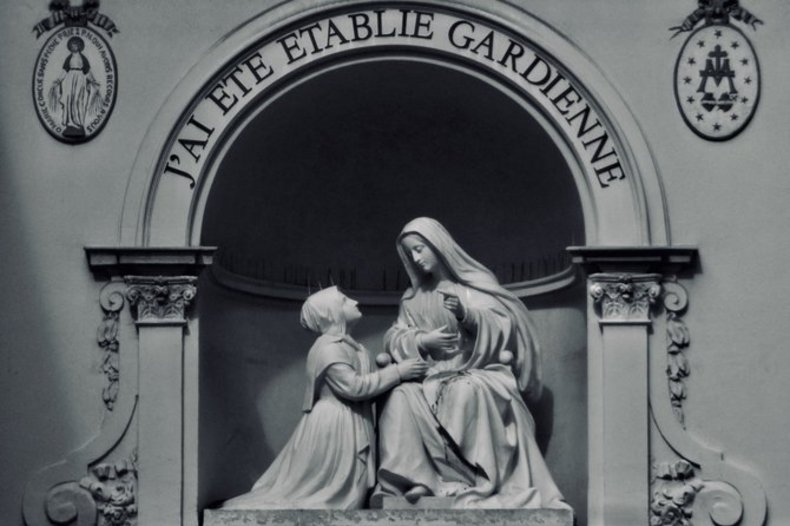
Representation of the first apparition to Sister Catherine Labouré, sculpture on the façade of the chapel of Notre-Dame-de-la-Médaille-miraculeuse / ©CC BY-SA 4.0/Thomon
Les raisons d'y croire :
- Apart from her visionary experiences, of which there were not many, there was nothing special about Catherine Labouré's daily life. She was a person of strong common sense and humility, and not prone to daydreams and delusions.
- Catherine was un unsophisticated country girl whose limited secular and religious education make it extremely unlikely that she could have invented the visions and their content. What's more, she remained anonymous to her community and the general public until her death. Her discretion and simplicity rule out an intent to deceive.
- Catherine's prophecies about France were extremely accurate.
- Catherine's confessor, Father Aladel, was very cautious about the visions she received. He advised her to detach herself from them and to focus above all on her sanctification. However, he conferred with the Archbishop of Paris who agreed to have the "miraculous medal" made.
- The overwhelming and enduring popularity of the Miraculous Medal is an indication of its supernatural origin: by the time Catherine died in 1876, over a billion copies had been distributed around the world.
- Numerous conversions and cures have been attributed to the Miraculous Medal, which has been worn by many saintly figures: Blessed Frédéric Ozanam, Saint John Henry Newman, Father Alphonse Ratisbonne, etc.
- As part of her process of beatification, when her body was exhumed 57 year after her burial, in the presence of doctors, the Superior General and other witnesses, it was found to be completely incorrupt and supple. Her eyes were as blue as the day she died.
Synthèse :
Catherine was the 9th of 11 living children born to Pierre Labouré and Madeleine Louise Gontard. Madeleine died prematurely in 1815, which was the first major sorrow for the 9-old girl. Catherine's education was elementary: schooling was unnecessary for a country girl, as she was expected to help with house chores and, after her mother's death, to care for the household. After two years in the care of an aunt, she returned to her father's house, where she served meals, milked cows and looked after the dovecote and henhouse.
An older sister, Marie-Louise, was soon admitted to the Daughters of Charity in Langres (Haute-Marne, France). Catherine wanted to enter the same order, but her father objected, arguing that she was needed at home. Until 1824, Catherine had no known mystical experiences. She was a devout, kind and hardworking young woman, but her piety was nothing exceptional in the eyes of her family.
Shortly before her 18th birthday, she had a dream: an elderly priest, whom she had never seen before, was celebrating Mass. At the end, he beckoned to her to come see him, but she ran away. Next, in her dream, she was visiting a sick person, she passed the old priest who had just celebrated Mass on the way. He said to her: "My daughter, it is good to care for the sick. You run away from me now, but one day you'll be happy to come to me. God has His designs on you!" But one difficulty prevented Catherine from entering religion: at 18, she could neither read nor write. Providence gave her unexpected help: a cousin of her late mother offered to take her in, where she could attend a short course at a boarding school in Paris. One day, on her way to the convent of the Daughters of Charity, she was startled when she saw the painted portrait of a priest at the entrance: it was the same priest she had seen in her dream! She was told that this man was Saint Vincent de Paul, the founder of the Daughters of Charity congregation.
In the spring of 1828, Catherine hoped to follow her older sister to the convent but her father stubbornly refused. Convinced that a stay in the capital would change his daughter's mind, he sent her to Paris to work in her brother’s restaurant for poor workers in Paris. But the following year, Catherine left the establishment and returned to her boarding school. From then on, all she could think about was being admitted to the Daughters of Charity. One of the nuns wrote to the superior: "She's a good village girl, just the way St Vincent likes them."
On 23 April 1830, she was admitted to the novitiate at the Paris convent. From the very first weeks, she had mystical visions: the "heart" of Saint Vincent de Paul appeared to her three times. It was a heart "afflicted at the sight of the evils that would befall France". The prophecy came true on the following week: on July 27, 1830, the July Revolution (also know as the Second French Revolution and the Trois Glorieuses) broke out in Paris. King Charles X was dethroned, the mobs desecrated churches, destroyed statues and threw down crucifixes and trampled them. Bishops and priests were imprisoned, beaten and killed. Shortly afterwards, Catherine had a series of perplexing visions, representing an important new period for her: "I saw Our Lord in the Blessed Sacrament, except for the times when I doubted." On June 6, Jesus appeared as "a king, with the cross on his chest." Catherine told only her confessor, Father Aladel, about her visions. The latter told her that it must have been a dream and that she should try to forget about it, adding, "Don't listen to these temptations. A Daughter of Charity is made to serve the poor and not to dream", he replied with authority.
On July 18, the Virgin Mary appeared to Catherine for the first time, and gave her a message announcing imminent time of upheaval in the country and all sorts of troubles. In addition to this prophecy, which came true, the message invited her to practice constant prayer, love and self-sacrifice. The Virgin said that there would be victims among the clergy of Paris, including an archbishop. A first Paris Archbishop, Denys Affre, was killed on June 25, 1848 on the barricades in Paris, but according to St. Catherine's autograph document recounting the first apparition, the prophesied events were to take place forty years later: the archbishop to whom the Virgin was referring was Mons. Georges Darboy, who was executed on May 24, 1871, in the Roquette prison in Paris.
On November 27, 1830, Sr. Catherine saw Our Lady for the second time, after which he young novice asked for a medal to be engraved on the model of her vision, surrounded by the invocation: "O Mary conceived without sin, pray for us who have recourse to you." Her confessor, Father Aladel, again rebuked her: "Pure illusion! If you want to honour Our Lady, imitate her virtues, and beware of your imagination!"
The third and last apparition took place in December of the same year. "You will no longer see me, but you will hear my voice during your prayers", Mary told the future saint. A month later, Catherine took her vows and received the religious habit. Immediately after that, she was sent to the Hospice d'Enghien, located in the village of Reuilly (now in the 12th arrondissement of Paris), where she impressed her community with her exemplary conduct, her fidelity to prayer, and deep piety. Her charity towards the poor and the sick, such as those affected by the cholera epidemic in 1832, made the young nun a model of self-sacrifice. However, no one knew about these apparitions, apart from her confessor.
After two years of investigation and observation, Father Aladel obtained from the Archbishop of Paris the permission to produce the medal (later known as "the miraculous medal") requested by the Virgin. The first 1,500 copies were delivered on June 30, 1832. Their distribution was an unimaginable success: in just 4 years, 2 million medals were sold; and by 1839, 10 million. It was also an unthinkable success in the United States (1836), Poland (1837), China and Russia (1838).
Famous and humble figures alike started wearing the medal, on all five continents. The Archbishop of Paris, Hyacinthe-Louis De Quélen, became a zealous propagator of the medal after personally obtaining unexplained cures with it. Pope Gregory XVI attached it to the head of his bed. In 1833, Father Jean-Gabriel Perboyre reported the miraculous cure of a fellow priest, and attributed it to the medal. Blessed Frédéric Ozanam also wore this medal when he founded the Conferences of Charity (Society of Saint Vincent de Paul). Saint John Vianney - the Curé d'Ars - acquired a statue of Our Lady of the Miraculous Medal in 1834 and, on May 1, 1836, he consecrated his parish to "Mary conceived without sin", becoming an ardent apostle of the medal and distributing hundreds of images with it, on which he wrote in his own handwriting the dates and names of those who consecrated themselves to the Immaculate Conception. Saint Bernadette wore this medal even before the Virgin appeared to her in 1858. Later, Saint Thérèse of Lisieux also wore it. In 1915, an American priest, Father Joseph Skelly, founded the "Marian Apostolate" in Philadelphia, with the perpetual novena to the miraculous medal. In 1917, Father Maximilien Kolbe founded the "Militia of the Immaculate", under the patronage of Our Lady of the Miraculous Medal, as well as a newspaper called The Knight of the Immaculata. During the war, he was busy handing out miraculous medals, saying: "They're my ammunition".
However, Catherine continued to lead a regular life - one might say a rather unremarkable one: she spent her days in the linen room, cared for the elderly, set up the henhouse, presided over the creation of a stable, and efficiently managed the budget allocated by the superior for the food and health of the convent's animals. Aside from her great energy and perfect obedience, nothing set her apart from the other sisters of her community.
When she learned, in 1858, that the Virgin had appeared to Bernadette Soubirous in Lourdes (France, Hautes-Pyrénées), she simply said: "She's the same one!" Mother Dufès, the convent's superior, was astonished by a fact she couldn't explain: "Without having read any of the published works, my sister Catherine knew more about everything that had happened [at Lourdes] than the people who had made the pilgrimage."
"Why should I be afraid of going to see Our Lord, his Mother and Saint Vincent?" After saying these words, Catherine entered eternal life on December 31, 1876. In the days following her death, crowds flocked to see her lie in state in her coffin. A poor woman brought her twelve-year-old son, crippled from birth, in a wheeled box. She was unable to lower him into the burial vault, but the child miraculously stood up on his legs! Catherine was proclaimed Blessed in 1933, then raised to the altars by Pope Pius XII in 1947.
Much has been said by historians about Catherine's ignorance and simplicity. But God gave her an experiential knowledge of spiritual realities. Shortly before her death, when the convent superior finally learnt who Sister Catherine's was, and her exceptional mystical life, as if to explain that she had been nothing more than an instrument in God's hands, the future saint told her: "The Virgin chose me so that no one would doubt her."
Several religious congregations have been placed under the protection of Our Lady of the Miraculous Medal, and numerous shrines, chapels and churches have been dedicated to her. The invocation "O Mary conceived without sin" was incorporated into the Catholic liturgy in 1839. Since 1847, November 27 is the feast of the Miraculous Medal (November 28 is the feast of St. Catherine Labouré). On July 26, 1897, the statue of Our Lady of the Miraculous Medal ("Our Lady of the Rays") was solemnly crowned by permission of Pope Leo XIII.
Patrick Sbalchiero
Au-delà des raisons d'y croire :
Catherine was declared venerable, beatified, then canonised, not for having seen the Virgin Mary, but for having lived a perfect Christian life with heroic virtues until her last day.
Aller plus loin :
Saint Catherine Labouré of the Miraculous Medal by Joseph I. Dirvin, Farrar Straus & Cudahy (January 1, 1958)









